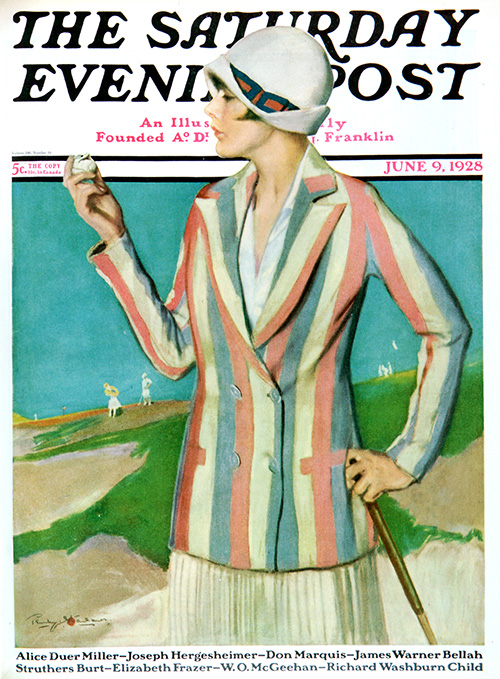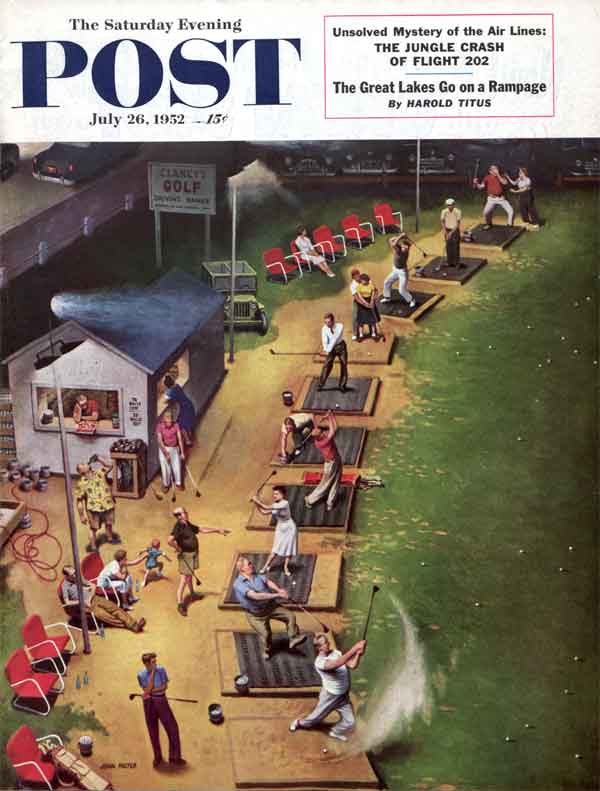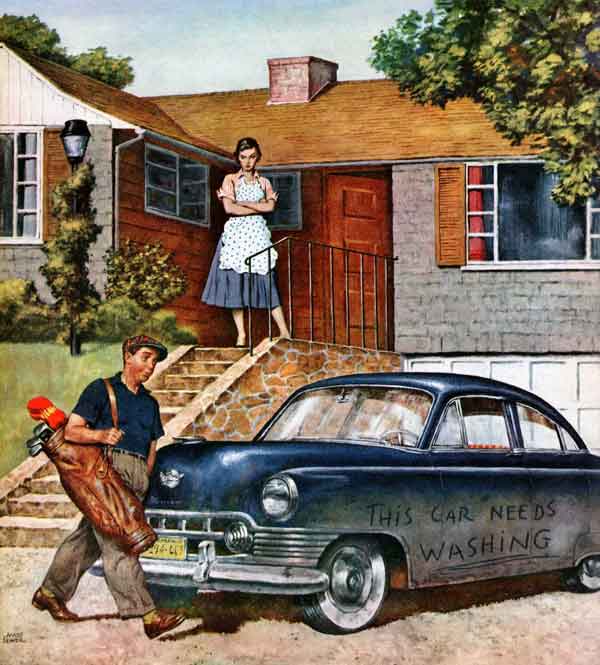Beyond the Canvas: Golf Takes Root in American Culture

Penrhyn Stanlaws
June 9, 1928. © SEPS
Golf arrived in the United States as a sport for the wealthy, even though the country club pastime originally came from Scottish shepherds in the Highlands.
Over the course of the twentieth century, golf’s popularity grew in American culture, and as its notoriety expanded, the sport trickled down the social ladder to become an iconic activity of casual business and suburban relaxation.
Three Saturday Evening Post covers, “Woman in Sandtrap” by Penrhyn Stanlaws from June 9,1928; “Golf Driving Range” by John Falter from July 26, 1952; and “This Car Needs Washing” by Amos Sewell from October 3, 1953, document the growth of golf in America from luxury haute-couture sport to chore-shirking fun for all.
“Woman in Sandtrap” is a 1920s era, Gatsby-esque watercolor that depicts a formally dressed female athlete out for a sporting day on the links. Her aristocratic attire of sport coat, skirt, and hat complement her determination to take the game seriously.
By the 1950s, golf had emigrated from the wealthy country clubs to middle-class America via the maturity of young, teenage caddies into active adult males. The once-boys of America who worked for tips as bag carriers had, by the 1950s, now mastered the game. These men had spent entire childhoods walking the country’s greatest courses, learning the game, and watching the players.

John Falter
July 26, 1952. © SEPS
Falter’s “Golf Driving Range” amplifies this socioeconomic change in the sport’s athletic base. The sport moved from the aristocracy, who had time in their day for such leisurely activity, to the American middle class.
Falter illustrates the wide breadth of working class America practicing its swing by evening lamplight. Along the line of swings, a professional gives lessons, a wife reads a magazine while she waits for her husband, a couple is out on a date, a family takes turns, and men and women practice their drives.
These middle class Americans gather at the driving range after working hours on a weeknight. This isn’t the best time to hit the driving range since daylight is optimal for spotting the tract of a golf ball in motion, but these players are devoted. They show up after work to practice at the range so that they have all day to play the actual 18-hole game over the weekend.

Amos Sewell
October 3, 1953 © SEPS
Sewell’s cover “This Car Needs Washing,” makes a joke out of the commonplace nature of the sport in American popular culture. Also painted in the 1950s, this piece shows a husband willfully ignoring his wife’s dust-drawn message to clean the car. He neglects his assigned chore in favor of an afternoon on the greens and fairways. The husband whistles in feigned absentmindedness, an attempt to pretend he hasn’t noticed his annoyed spouse at the door.
Even today, this image resonates with suburban America. Golf is now so beloved by the country that most could understand why a weekend of golf would be well worth the ensuing anger for shirking chores.
Golf, as a single-athlete sport, has become a game for the whole country. Couples, parents and children, single individuals, friend groups, and business associates all head out to talk, drink, and play when the weather’s right.